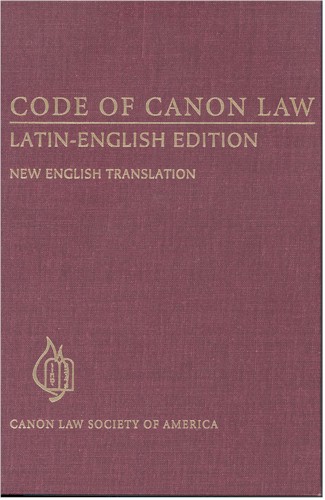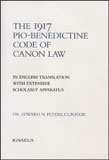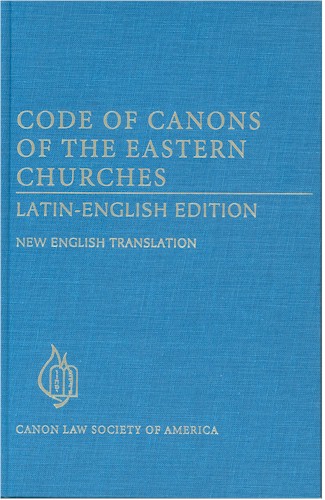|
To work for the proper implementation of canon law is to play an extraordinarily constructive role in continuing the redemptive mission of Christ. Pope St. John Paul II |
|
|
|
|
|
Updated 24 August 2019 |
Latin for Graduate Students (LA 500) |
|
Notices ► |
|
|
General remarks
|
Overview: This course presents what must be understood about Latin in order to learn and use Latin.
Class meets: =
Required texts: None. Students must, however, have in-class access to William Whittaker's Words or another electronic or downloadable dictionary such as 'Lewis & Short' or 'SPQR'. See also Suggested Resources below.
Class format: Lecture and translation exercises. The goal is to have the grammar and syntax presented by the end of October, leaving November and early December free to practice using the techniques outlined.
Course grading: PASS/FAIL based on one's performance on various translation exercises to be completed outside of class and discussed in class. No midterm or final.
Course Outcome: Upon completion of this course the successful student will understand the structure of Latin necessary to appreciate standard theological expressions and to undertake further self-study as suited to his or her research needs.
SHMS Bulletin description: A basic knowledge of Ecclesiastical Latin sufficient to be able to translate basic scriptural and liturgical texts, and philosophical and theological statements (with the help of a lexicon) and to gain an enriched understanding of language structure. (This course is graded pass or fail.) 2 credits.
|
|
Additional remarks |
This course assumes no prior study of Latin; its goal is to show students how to acquire a reading knowledge of Latin suitable for use in a Catholic, graduate, theological context. |
|
A two-credit survey course is, of course, insufficient time to acquire enough Latin grammatical forms and vocabulary so as to approach Latin texts independently. Students should memorize as best they can the various forms encountered in this course (the benefits of doing so are many!) but they should especially strive to learn how to use the various translation tools and techniques discussed in this course. |
Latin is not the way ancient Romans spoke English, it's the way ancient Romans spoke. Grasp that and one has the essence of the thing. |
|
|
The differences between "Classical Latin" and "Ecclesiastical Latin" are real but usually exaggerated. This course inclines toward ecclesiastical usage (though the point is insignificant for student purposes). |
|
Suggested resources
Bibliography |
Students engaged in graduate level study of Ecclesiastical Latin should have access to these works:
• Richard Prior & Joseph Goldberg, 501 Latin Verbs Fully Conjugated [1995], (Barron's, 2° ed., 2008) 689 pp.
• John Collins (1937-2002), A Primer of Ecclesiastical Latin [1985], (Catholic University of America, 1988) 451 pp., and John Dunlap, An Answer Key to Primer of Ecclesiastical Latin (Catholic University of America, 2006) 168 pp.
• Basil Gildersleeve (1831-1924), Gildersleeve’s Latin Grammar [1867], as revised by Gonzalez Lodge, (Dover, 2009) 546 pp.
|
| Prayers |
These prayers use prose prompts. |
|
|
In nomine Patris, et Filii, et Spiritus Sancti. Amen.
Pater Noster, qui es in cælis: sanctificetur nomen tuum; adveniat regnum tuum; fiat voluntas tua, sicut in cælo, et in terra. Panem nostrum quotidianum da nobis hodie; et dimitte nobis debita nostra, sicut et nos dimittimus debitoribus nostris; et ne nos inducas in tentationem; sed libera nos a malo.
Ave Maria, gratia plena, Dominus tecum. Benedicta tu in mulieribus, et benedictus fructus ventris tui, Jesus. Sancta Maria, Mater Dei, ora pro nobis peccatoribus, nunc et in hora mortis nostræ. Amen.
Gloria Patri, et Filio, et Spiritui Sancto; sicut erat in principio, et nunc, et semper, et in sæcula sæculorum. Amen.
|
|
Topic 01
Orientation
|
Concepts include: History, Fundamental Syntax, Parts of Speech Read about it in Collins: n. a.
Basics
Distinguishing Latin grammar and syntax from English grammar and syntax.
Identifying parts of speech.
Some learning techniques. |
|
Topic 02
Nouns
|
Concepts include: Declension, Number, Gender, Case. Read about it in Collins, Chaps. 1, 2, 3, 15, 16, 19.
|
|
Topic 03
Adjectives |
Concepts include: Agreement, Degrees of Comparison Read about it in Collins, Chaps. 4, 16, 28.
|
|
Topic 04
Verbs Regular, Indicative |
Concepts include: Number, Person, Tense, Conjugation Read about it in Collins, Chaps. 5, 6, 7, 8, 9, 10, 11, 13
|
|
Topic 05
Verbs Irregular, Indicative |
Concepts include: Number, Person, Tense, Conjugation Read about it in Collins, Chaps. 3, 12, 17, 33, 34.
|
|
Topic 06
Prepositions, Conjunctions, & Adverbs |
Concepts include: Literal and Metaphorical use, Degrees of Comparison Read about it in Collins, Chaps. 1, 27.
|
|
Topic 07
Pronouns |
Concepts include: Personal, Relative, Possessive Read about it in Collins, Chaps. 10, 19, 23, 24, 26, 28, 29. |
|
Topic 08
Key Syntax |
Concepts include: English coincidence and conflict, Word Order, Dative of the Possessor, Power of the Ablative
Read about it in Collins, Chaps. 10, 19, 23, 24, 26, 28, 29.
|
|
Topic 09
"Curve Balls" |
Concepts include: Deponents, Subjunctive, Imperative, Subject-Accusative, & Demonstratives Read about it in Collins, Chaps. 20, 21, 22, 23, 24, 25, 26, 30.
|
|
Topic 10 et seq.
The Latin Sentence |
Codex plerumque non definit ritus.
Ecclesiae Romanae Episcopus Collegii Episcoporum est caput, Vicarius Christi, atque universae Ecclesiae in terra Pastor.
Canones Codicis Ecclesiam latinam respiciunt.
Sanctus Petrus et ceteri Apostoli unum Collegium constituent.
Leges respiciunt futura non praeterita.
Plenam et supremam in Ecclesia potestatem Romanus Pontifex obtinet legitima electione.
Consuetudo est optima legum interpres.
Christifideles solliciti esse debent ut societas civilis libertatem parentibus agnoscat.
Officium ecclesiasticum sine provisione canonica valide obtineri nequit.
Ex divina institutione, inter christifideles sunt in Ecclesia ministri sacri.
|
|
|
Fuit quidam comes Imperatoris qui sedebat in domo sua et habebat quendam parvulum natum, et iacebat coram eo et non erat in domo alius praeter eum.
Misit autem Caesar et vocavit eum. Ille vero surrexit et ivit ad eum et reliquid cum infante canem, venatorem sagacem, inferius, qui canis iacebat iuxta puerum.
Et ecce serpens affuit et insurrexit in puerum. Cucurrit canis et praesit serpentem et obviavit supradicto domino. Os autem canis plenum erat sanguine.
Comes ille videns haec timuit propter filium et evanginato gladio interfecit canem.
Et vadens domum reperit puerum iacentem et serpentem mortuum iuxta eum, et vidit quod sine causa peremit canem et penituit facti
|
|
Materials on this website represent the opinions of Dr. Edward Peters and are offered in accord with Canon 212 § 3. This website undergoes continual refinement and development. No warranty of completeness or correctness is made. Dr. Peters' views are not necessarily shared by others in the field nor are they intended as canonical or civil advice.
CanonLaw.info Homepage & Site Directory / Help support CanonLaw.info / Original Materials © Edward N. Peters |
| Staging |





